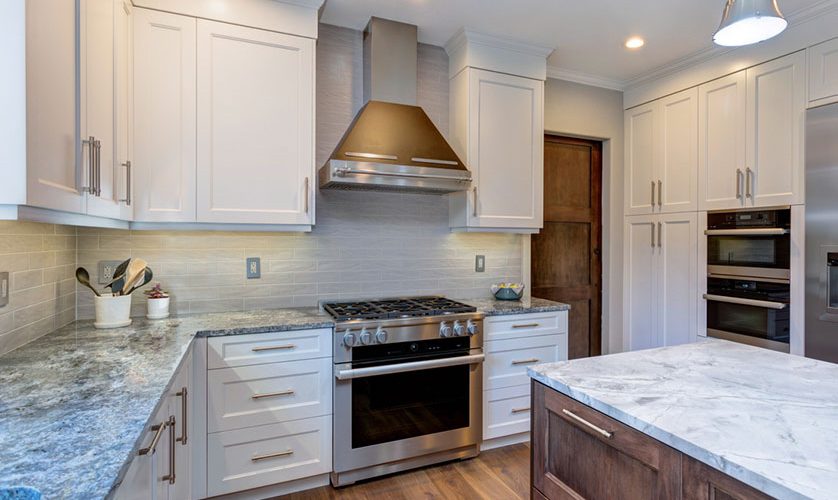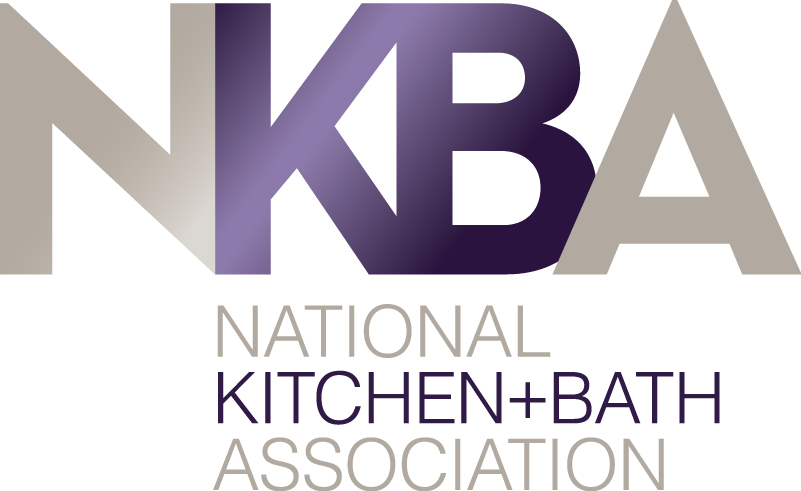
Transitional kitchen design is the perfect blend of traditional and modern styles, offering a timeless and flexible look that appeals to a wide range of tastes. This design combines the warmth and elegance of classic elements with the sleek, clean lines of contemporary design. A kitchen remodeler shares some key tips on how to ace transitional kitchen design.
Focus on Clean Lines and Simple Profiles
Transitional kitchens emphasize clean lines and understated elegance. While traditional kitchens often feature ornate detailing, a transitional kitchen favors simplicity with flat-front cabinets and sleek, minimal hardware. However, there’s room for subtle details, such as Shaker-style cabinetry, which adds a hint of craftsmanship without overpowering the design.
When choosing fixtures like faucets and lighting, opt for designs with clean, simple profiles that complement both classic and modern aesthetics. Brushed nickel, chrome, or matte black finishes are popular choices in transitional kitchens, offering a polished yet versatile look.
Incorporate Neutral Color Schemes
A neutral color palette is key to pulling off a transitional kitchen. Whites, grays, soft creams, and muted earth tones create a sophisticated foundation that feels timeless. These neutral shades allow you to play with other design elements without overwhelming the space.
For cabinetry and walls, consider soft shades that complement both warm and cool tones. You can add contrast with a darker island or lower cabinets, creating visual interest while keeping the overall look cohesive. The subtle color palette helps maintain a harmonious balance between traditional and contemporary design.
Mix Traditional and Modern Materials
A hallmark of transitional kitchen design is the mix of traditional and modern materials. You can incorporate classic materials like natural stone, wood, and marble, alongside modern elements such as stainless steel, glass, and quartz. For example, a marble or granite countertop paired with sleek, stainless-steel appliances achieves the perfect balance.
Mixing these materials adds depth and character to the space without feeling cluttered. You could choose a natural stone backsplash to complement contemporary cabinetry or pair a farmhouse sink with modern light fixtures for that transitional feel.
Blend Traditional and Contemporary Elements
The key to a successful transitional kitchen is blending traditional and contemporary elements seamlessly. You might opt for a classic apron-front sink but pair it with modern pendant lighting and streamlined cabinetry. This juxtaposition keeps the design interesting and ensures the space feels balanced.
You can also use transitional elements in your hardware and lighting choices. A premier kitchen contractor recommends mixing metals, such as brass and chrome, to add character. Choosing lighting fixtures with a contemporary edge can also modernize traditional spaces. The goal is to achieve a harmonious combination that feels neither too old-fashioned nor overly modern.
Emphasize Functionality and Comfort
Transitional kitchens are known for their balance of form and function. While the aesthetic is important, it should also be a practical space where you enjoy cooking and entertaining. Incorporate functional elements such as large kitchen islands, which provide additional workspace, storage, and seating, making it a hub for both meal prep and social gatherings.
Ensure that the layout is user-friendly and that the space flows well. Soft-close drawers, pull-out shelving, and built-in appliances help maintain the sleek look while offering convenience. The beauty of a transitional kitchen is that it can feel modern while being highly functional and comfortable.
Incorporate Textures and Layered Details
While transitional kitchens tend to avoid overly ornate features, texture and subtle details can add warmth and depth to the design. Consider incorporating textured tile backsplashes, wooden beams, or natural stone surfaces to create visual interest. Open shelving with curated displays of dishware or decorative items can also add a personal touch without overpowering the design.
Let’s Start a Conversation!
Acing transitional kitchen design is all about finding the right balance between traditional charm and modern simplicity. If you’re looking for a remodeling contractor near me, contact DreamMaker Bath & Kitchen of Southern Rhode Island at (401) 399-3917 or fill out our online form to schedule an appointment. We serve homeowners in Ashaway, Block Island, Bradford, Carolina, Coventry, and other surrounding areas.





